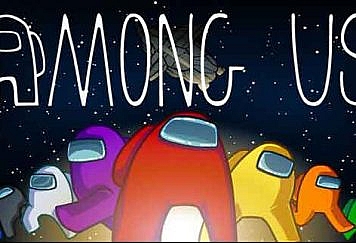In the rapidly evolving realm of Software as a Service (SaaS), delivering exceptional customer support is defining factor for success. SaaS companies continue to innovate and disrupt industries. The bar for customer service excellence is set higher than ever before. Amidst this transformative landscape, one tool stands out as a game-changer: the SaaS ticket system.
As businesses navigate the shifting tides of customer expectations, they require more than traditional support methods to stay afloat. SaaS ticket systems provide a lifeline—a structured, efficient, and proactive approach to handling customer inquiries and concerns. In this digital age, communication channels are diverse and customer demands are dynamic. The SaaS ticket system emerges as a crucial tool for maintaining customer satisfaction, fostering loyalty, and ultimately, driving growth.
We uncover the nuances of SaaS ticket systems, examining their features, and best practices for implementation. Together, we’ll navigate the seas of customer support. We’ll explore how SaaS ticket systems have evolved as a beacon of efficient assistance and a catalyst for exceptional customer experiences.
The Evolution of Customer Support
The landscape of customer support has traversed a remarkable evolutionary path, adapting to the changing needs of businesses and consumers alike. From traditional call centers to the digital age, the evolution of customer support can be encapsulated in key stages:
- In the early days, customer support was primarily managed through phone calls and physical letters. Businesses operated call centers to address customer queries and resolve issues, often resulting in long wait times and limited accessibility.
- The advent of email introduced a more convenient mode of communication. Customers could now send their inquiries and concerns electronically, providing a faster and asynchronous means of interaction. However, managing high email volumes and ensuring timely responses remained challenging.
- With the proliferation of online platforms, businesses expanded their multiple communication channels to include live chat and social media. This marked a shift towards real-time interactions, enabling customers to engage on platforms they were already using.
- As the complexity of customer interactions grew, the need for structured issue tracking became evident. Enter the era of SaaS ticket management. They offer centralized platforms for customers to submit tickets, track their progress, and receive timely updates.
Unpacking SaaS Ticket Systems
SaaS ticket systems have emerged as a transformative force, redefining project management. Let’s delve into the core elements that make SaaS ticket systems an indispensable advantage:
- SaaS helpdesk systems serve as a centralized platform where all customer inquiries, issues, and requests are aggregated. This unified hub ensures no query falls through the cracks and provides a holistic view of customer interactions.
- Each customer inquiry is assigned a unique ticket, allowing support agents to track its journey from submission to resolution. This systematic approach ensures transparency, accountability, and efficient problem-solving.
- SaaS service desk systems seamlessly integrate various communication channels, enabling customers to reach out via email, chat, or social media. Agents can respond from a single interface, promoting consistent interactions.
- Armed with historical data, support agents can access a customer’s previous interactions and preferences. This context enables agents to provide tailored solutions and empathetic assistance.
- Routine tasks like ticket assignment and initial responses can be automated. They ensure prompt acknowledgment of customer queries and free up agents for more complex interactions.
- SaaS ticket systems generate valuable data on response times, resolution rates, and customer satisfaction. These insights drive continuous improvement in support processes and overall customer experiences.
- Integration with knowledge bases allows customers to access self-help resources directly from the ticket system. Quick access to FAQs and guides enhances customer empowerment.
- A SaaS help desk software is designed to accommodate growing support needs. As your business expands, the system can scale to handle increased ticket volumes and evolving customer expectations.
Key Features of an Effective SaaS Ticket System
An effective SaaS ticket system serves as the linchpin of modern customer service software. It offers a range of indispensable features that redefine the support experience. Here are the key elements that make a SaaS ticket system truly exceptional:
- Seamlessly connect customer interactions from various channels, such as email, chat, and social media, into a centralized system. This ensures consistent and cohesive communication across platforms.
- Streamline support processes with automated ticket assignment, routing, and escalation. Efficient workflow management reduces manual intervention and accelerates issue resolution.
- Empower customers with self-help options by integrating a robust knowledge base. Accessible directly within the ticket system, this feature provides instant solutions to common queries.
- Gain insights into support performance and customer behavior through advanced reporting tools. Analyze metrics like response times, resolution rates, and customer satisfaction to drive continuous improvement.
- Enable seamless internal collaboration by allowing support agents to share notes, insights, and solutions within the ticket system. This fosters a cohesive team environment and minimizes information gaps.
- Equip support agents with a holistic view of each customer’s history and interactions. This personalized context enables agents to offer tailored solutions and a more empathetic support experience.
- Keep customers informed at every step of their support journey with automated notifications and updates. Transparent communication enhances trust and reduces uncertainty.
- Tailor the ticket system to match your business’s unique support processes. Customizable workflows ensure alignment with your specific operational needs.
- Seamlessly sync customer support data with your Customer Relationship Management (CRM) system for a comprehensive view of customer interactions and seamless data sharing.
- Enable support agents to stay connected and responsive even while on the move. Mobile accessibility ensures that critical support tasks can be managed from anywhere.
Implementing a SaaS Ticket System: Best Practices
Introducing a SaaS ticket system into your customer support ecosystem is a strategic endeavor that can yield substantial benefits. To ensure a smooth and successful implementation, consider these best practices:
- Evaluate your current service option processes to identify pain points and opportunities for improvement.
- Set clear objectives for implementing the ticket system, such as reducing response times or enhancing customer satisfaction.
- Define roles and responsibilities within your support team to ensure seamless coordination.
- Research and choose a reputable SaaS ticket system vendor that aligns with your business requirements and offers necessary features.
- Prioritize scalability and customization options to accommodate future growth and changing needs.
- Request demos and user reviews to gain insights into the user interface and functionality.
- Plan for the migration of existing support data, including tickets, customer information, and historical interactions, and build out a knowledge base.
- Ensure seamless integration with other tools your support team uses, such as CRM systems, knowledge bases, and communication platforms.
- Customize the ticket system to reflect your brand’s identity and match your support workflows.
- Provide comprehensive training to support agents on using the new system effectively, emphasizing navigation, ticket handling, and automation.
- Communicate the benefits of the ticket system to your support team, addressing any concerns or resistance.
- Implement the new system in phases to minimize disruption, allowing your team to adapt gradually.
- Monitor key performance metrics, such as response times and customer satisfaction, to gauge the system’s impact.
- Gather feedback from support agents and customers to identify areas for further enhancement.
- Regularly update and optimize your ticket system based on user insights and changing business needs.
- Create detailed documentation and user guides for both support agents and customers to reference.
- Foster a culture of knowledge sharing by encouraging support agents to contribute to the knowledge base.
Future Trends and Innovations
The landscape of SaaS customer support is continually evolving, driven by advancements in technology and changing customer expectations. As we peer into the horizon, several exciting trends and innovations are shaping the future of SaaS ticket systems:
- Artificial Intelligence (AI) and machine learning are poised to play a pivotal role in automating routine tasks. These can include initial ticket triage and responses.
- AI-driven chatbots offer instant assistance, freeing up human agents for more complex interactions and strategic support.
- Predictive analytics will enable businesses to anticipate customer needs and address potential issues before they escalate.
- By analyzing historical data, businesses can offer preemptive solutions, enhancing customer satisfaction and loyalty.
- The integration of diverse communication channels will create a unified and seamless support experience. These can include social media, messaging apps, and voice assistants.
- Customers will enjoy consistent interactions across platforms, contributing to a holistic brand perception.
- AI-driven insights will enable support agents to understand customer preferences and behaviors better, tailoring solutions and recommendations accordingly.
- Personalized support journeys will enhance customer engagement and build stronger relationships.
- Natural Language Processing (NLP) advancements will empower ticket systems to comprehend and respond accurately to complex customer queries.
- Language barriers will be minimized, facilitating global support and expanding market reach.
- The Internet of Things (IoT) ecosystem expands. So, SaaS ticket systems will interface with IoT devices, enabling proactive issue resolution and support for smart products.
- VR and AR technologies will transform the support experience by providing immersive solutions and remote visual assistance.
- Support agents can guide customers through troubleshooting processes in real time in customer service portals.
Conclusion
Customer support has emerged as a cornerstone of success. The SaaS ticket system stands as a beacon of efficiency and innovation.
Remember that the SaaS ticket system is more than a technology—it’s a catalyst for transformation. By implementing these systems, you position your business for sustainable growth. You’ll also achieve unmatched customer loyalty and a competitive edge in the dynamic world of SaaS.
Follow TechStrange for more Technology, Business, and Digital Marketing News.





